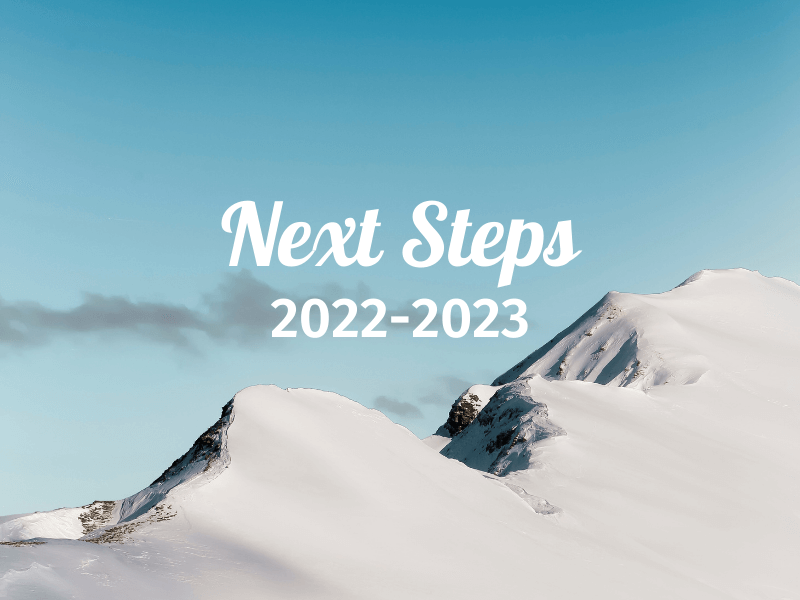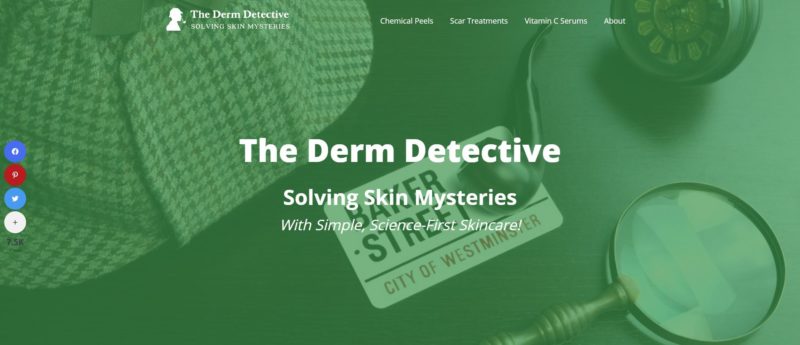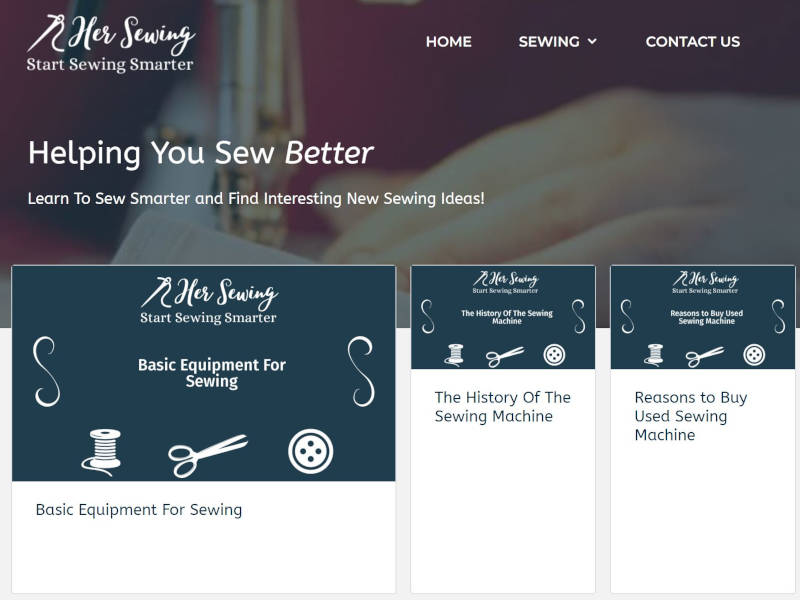
Welcome back to Flexibility Is Freedom! 😎
Today, I'm extremely excited to present my next steps 2022-2023 plan - a comprehensive outline of my vision, goals, strategy, tactics, and timeline for the next 18-20 months.
My original next steps 2019 blog post was (and continues to be) a fundamental fulcrum for both my personal journey and professional development.
In that post, I even joked half-heartedly about joining a digital agency or hodling Bitcoin as a possible "plan B" (if only I bought Bitcoin in 2019 😭), both of which became true!
It's been almost 3 years now - and I didn't publish a next steps post in 2020 or 2021, partly because of the crazy times and partly because I hadn't yet met my goal of $1K per month.
Fast forward to today, May 2022, and I've exceeded the $1K target for 9 consecutive months now, so it make sense to publish a new blog post for the next stage of my passive income journey.
Side Note: I initially reached $1K in April 2020 but was whacked by Amazon's commission rate cut; I reached it again in Oct/Nov 2020 but got crushed by Google's Dec 2020 Core Update; I finally returned to $1K in Aug 2021 - hopefully third time's the charm! 🍀
While times have definitely changed since the onset on my journey to Flexibility & Freedom (COVID-19, increased work-from-home, shift in workplace attitudes towards personal flexibility), my burning desire to live life to its fullest with no regrets, has only grown stronger over time! 🔥
RECOMMENDED READING:
Now, without further ado, I'm pleased to present my next steps 2022-2023 plan!
“Where there is no vision, the people perish: but he that keepeth the law, happy is he.”
Proverbs 29:18
In my next steps 2019 post, I began with the vision for TheDermDetective.com.
As a reminder, the vision is an idealized state that helps provide one with purpose and direction.
This time, however, I've decided to focus on the overall vision for my life, which is as follows:
For the remainder of this blog post, I'll discuss the individual projects that I'm working on.

First on my list is TheDermDetective.com, a skincare affiliate website that I started in late 2018, which has grown to ~15,000 sessions per month and now generates ~US$1,500 per month.
My goals for TheDermDetective.com are as follows:
Compared to current levels, I need to increase revenue by ~$1,000 per month in 6 months to meet my EoY 2022 goal and by another $1,500 per month in 12 months to meet my EoY 2023 goal.
I believe these goals are challenging enough to push me to the next level yet realistic enough that I can hold myself accountable to them.
Next, let's take a look at my strategic plan (what I need to do):
“The art of marketing is the art of brand building. If you are not a brand [then] you are a commodity.”
Philip Kotler, Professor of International Marketing at Kellogg School of Management
Now, let's take a look at my tactical plan (how I plan to get things done):
It's time to put down my CEO hat in favor of my COO hat. 🎩
The only way to executive my strategy and meet my goals is to build business processes that are:
Next, I will moonlight as a project manager as well - setting up project timelines, breaking down projects into discrete tasks, assigning tasks to team members (including myself), following up on deliverables, and keeping projects on track and on budget.
For this, I will continue to use Wrike - a project management software - to organize projects, schedule deliverables and workloads, and stay on top of everything (which is always a challenge!).
I will continue to sharpen my management abilities and learn to work efficiently with my team by creating efficient approval processes so that I'm no longer the bottleneck.
In addition, I'll set KPIs for each team member (including myself), such as # of articles per month, and create a high-level development plan for each person.
This way, as someone works longer for me and I trust their work more, I can give them more responsibility and autonomy - continuously moving them up the value chain.
Finally, I will proactively hire new freelancers (and develop a repeatable process here, too) to add team members as needed.
Assuming Revenue per Thousand (RPM) remains around $100, here's a simple timeline:
Based on this timeline, I need to add 5,000 sessions and $500 per month each quarter to meet my revenue goals for 2022 and 2023, with one quarter of leeway in 2023.
For a long time, I've been discussing the importance of diversification on this blog - and it's about time I took my own advice! 😂
I've worked on building new websites in the past, but they never really got off the ground - usually because my main website monopolized my time or as in the past year, because of a strategic pivot to buy real estate and join a digital agency.
However, I have a number of opportunities in the pipeline in the following categories:
These websites range from zero-content and zero-backlink domains to aged domains with some content, backlinks, and even traffic already.
For example, here's a sewing website that I recently purchased:

Now, I should mention that the current pipeline is very heavy on consumer categories (B2C), which is dominated by Amazon Associates (definitely negative in my experience).
However, in some cases, there are decent alternative affiliate programs, like Chewy.com for pets and tons of mattress companies (think "bed-in-a-box") for mattresses and pillows.
Moreover, I may decide to sell some of these websites down the road, which is an option to reduce my overall exposure to consumer categories (and Amazon Associates, in particular).
Overall, my goal for these new websites is to develop 1-2 additional income sources to supplement my current income from TheDermDetective.com.
Based on my experience, I know it takes time to grow traffic and revenue - it took 8 months to reach $100/mo and 18 months to reach $1,000/mo for TheDermDetective.com - and that was under the previous Amazon Associates commission rates (which they cut by 50%+ in April 2020).
That's why I've sandbagged the goals a bit to give myself a longer timeline - but that doesn't mean I won't be busting my ass to grow traffic and revenue as fast as possible.
In addition, I'm optimistic that I can grow these websites (especially the aged ones) faster than before, thanks to my SEO experience and business processes from the last few years.
In terms of strategy and tactics, it's going to be similar to TheDermDetective.com, with a focus on growing organic traffic through keyword research, content creation, and on-page optimization - all the good stuff that I've discussed on this blog over the years.
However, this time I'll be applying a staged approach where my activities and efforts will depend on the stage that each website is in, as measured by defined KPIs like traffic, content, or revenue.
The first stage will always be a proof of concept - does the idea make money and if so, is it worth the time and investment, relative to other opportunities?
For this stage, I will build a v1 website (as mentioned earlier) using an existing Oxygen template, complete with static pages and at least 10 affiliate articles to get started.
Before creating the website, however, I'll need to complete one round of keyword research and one round of competitor research, respectively.
In addition, I'll also need to complete one round of affiliate program research to evaluate monetization options beyond Amazon Associates.
This research will inform key decisions at this stage - namely, what keywords to target and what types of articles to publish for a few quick wins to validate the business model.
However, if I identify any "red flags" during this stage, such as declining industry search traffic, high degree of competition, lack of quality affiliate programs, or a lack of personal interest, then I will kill the idea and move onto more promising ones.
I've learned that you need to identify risks and rewards very early on to avoid wasting your time and money on unprofitable (or unfulfilling) projects.
Once the v1 website is complete, I'll monitor its progress against defined KPIs like traffic and revenue; but at this point, I'll stop working on it until it meets my minimum requirements.
For example, that could be traffic exceeding 500 visits/mo or revenue above $50/mo.
Once a v1 website has met my minimum requirements for "graduation", it'll be promoted it to the next stage which I call the Linear Growth Phase.
The reason it's "linear" is because a given amount of inputs (time, money, effort) yields a proportional (or sometimes, less than proportional) amount of outputs (traffic, revenue).
This is the "bootstrapping" stage where a ton of work is put in - but often with little to show for it.
During this stage, I'll be applying and refining my business processes for content creation - using pre-defined templates and hiring freelancers to write for me.
I might even experiment further with artificial intelligence (AI) generated content - the likes of GPT-3 which I tinkered with before, and have lifetime access to via Nichesss.
The objective of this stage is to build a "real" website with 50+ affiliate articles and a growing library of information content ("linkable assets").
It's about laying the groundwork to prepare the website for a period of exponential growth, which is when a given amount of inputs yields a more than proportional amount of outputs - sometimes referred to as increasing economies of scale - the dream scenario for any business.
Before graduating to stage 3, however, the website will again have to meet minimum requirements such as traffic exceeding 5,000-10,000 visits/mo or revenue above $500-1,000/mo.
Following a period of linear growth, I believe a website (or any digital property, really) will enter a period of exponential growth - this is when it reaches a critical mass or breaches a key threshold that unlocks a wave of new opportunities.
In organic traffic (SEO), this might be when a website has built enough content or backlinks to compete head-to-head with its main competitors, or even better, to surpass those competitors.
At this stage, whenever you publish an article, it ranks very easily and without much optimization, often immediately or within a few days.
Other examples of this include:
I believe my main website, TheDermDetective.com, is currently in this exponential growth stage, as my time and efforts have declined over the last few months, but the results have maintained themselves and to some extent, even improved.
But does this exponential growth phase last forever?
I don't think so - but it might have a long runway, depending on the niche and competition.
Of course, if you're too successful and end up dominating the niche (a real possibility if you're in a very narrow niche) then growth will obviously slow as there's less "real estate" to gobble up.
As growth slows down (or the industry experiences negative developments, such as declining search traffic or a major affiliate program cutting their commission rates), I will transition the website from growth into maintenance mode - either holding for cash flow or selling for profit.
Finally, when a website reaches its maturity phase - i.e. growth is slowing down, there's fewer and fewer new topics to cover, keyword cannibalization becomes an issue - I will evaluate whether I want to hold it for cash flow or recoup my investment and reduce my risk by selling it.
Moreover, "maintenance" does not mean "neglect" - but it does mean a lower level of activity compared to the growth phases, due to declining ROI compared to before.
My timeline for the new websites is as follows:
As you can see, my timeline is a little vague as I don't have any visibility into which websites will yield the best ROI and which ones will be duds. It's possible that they'll all be duds, too.
That's why the timeline is more about setting up the v1 websites and monitoring/optimizing them, and waiting for the winners to show up before investing in additional content and backlinks.
Finally, I want to wrap up this next steps post with a few business ideas that are on my mind, but not yet in my immediate action plan.
I've had an itch to start a SaaS product for a while now - the economics of SaaS is very attractive and I'd love to experience the challenge of building an actual product, not just selling someone else's.
However, I am not a developer, which is why I've been learning a lot about the "no code" movement, where non-technical founders leverage apps and infrastructure that don't require coding to build their initial MVP - minimum viable product.
In terms of actual SaaS ideas, I have a few SEO related ones, but if I want to be serious, I need to explore opportunities across more industries, as it's more likely than not that my idea has already been tried by someone before.
Overall, if I'm able to build a sustainable level of income from affiliate websites - perhaps around $3,000-5,000 per month (enough to cover my financial obligations and living expenses), then I'd be more open to researching and building a SaaS business.
Another avenue is ecommerce, which I already have indirect exposure to as an affiliate for retailers like Amazon and private merchants alike.
I never looked too deeply into the eCommerce business model and market opportunity, but I'm wary of the high degree of competition and low costs of entry for this industry.
Platforms like Shopify continue to make it easier for new entrants to sell their products with minimal capital investment, eventually crowding the market and squeezing margins.
This goes back to the saying, "if you're not a brand, you're a commodity."
However, there's something magical about creating and selling a physical product, that you designed and researched (or perhaps bought from a manufacturer in China).
All in all, I'll investigate this opportunity in the future as well, as I believe I'd bring very complimentary skills to the table with my knowledge of SEO and affiliate marketing.
Finally, I'm very interested in doing something in crypto as well - in particular, I've gradually gotten more conviction around the use case and long-term value of Bitcoin.
We're currently going into a crypto bear market, but I'd love to explore ways to pair my interest in this emerging asset class with viable business opportunities - lots of whitespace here, although I expect that competition will be intense.
In fact, I'm fascinated by the potential of Web3 technology - the idea of decentralized platforms that perform the same function as a Google, YouTube, Twitter, or Facebook, but without the centralized control and censorship that is pervasive on these platforms today.
Thanks so much for reaching the end of this blog post! I really appreciate you taking the time to read my next steps 2022-2023.
I'm extremely excited to execute this plan, but I also know to enjoy the journey as well.
These days, it feels like we're all hurrying to get to the destination, but if we don't pay attention, we'll arrive at the end of life without really experiencing any of it.
Wishing you a healthy, happy, and successful 2022! 🎉
Cheers,
Tom